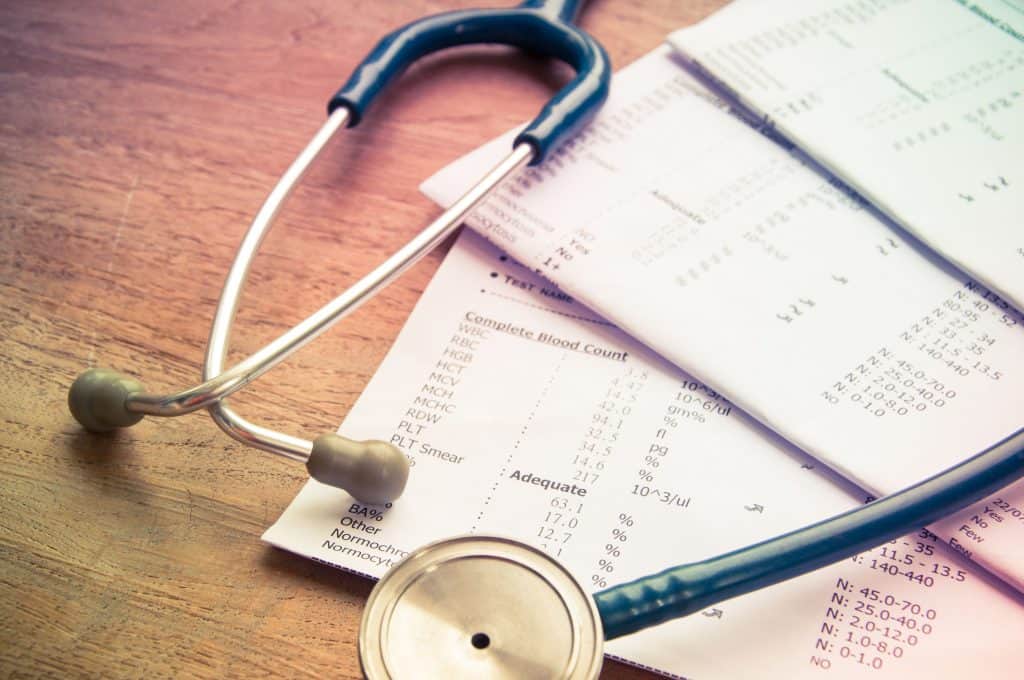What is a Letter of Medical Necessity and Why Would I Need One?
Posted by Prescription Hope - See Editorial Guidelines (Last Updated On: Thu Apr 27 2023)
Have you ever been denied a service or medication by your insurance? Your doctor calls in a prescription for you that you need, and you find out it is hundreds if not thousands of dollars because your insurance won’t cover it. And in that moment, you feel your heart drop to your stomach. But have you ever looked into a letter of medical necessity?
 A letter of medical necessity may be your ticket out of this situation. It may get you the coverage you need. So, in this article, we are going to cover what exactly a letter of medical necessity is, the process of getting one, and more.
Before we dive too deep, here’s a quick answer for you.
What is a Letter of Medical Necessity? A letter of medical necessity, abbreviated as LOMN, is a form or letter your doctor fills out stating that the medication or service prescribed is necessary for your health. Your doctor would submit it to the insurance company to be reviewed from there.
A letter of medical necessity may be your ticket out of this situation. It may get you the coverage you need. So, in this article, we are going to cover what exactly a letter of medical necessity is, the process of getting one, and more.
Before we dive too deep, here’s a quick answer for you.
What is a Letter of Medical Necessity? A letter of medical necessity, abbreviated as LOMN, is a form or letter your doctor fills out stating that the medication or service prescribed is necessary for your health. Your doctor would submit it to the insurance company to be reviewed from there.
What is a Letter of Medical Necessity?
A letter of medical necessity is a legal document. It is a formal argument submitted by your physician to the insurance company. The letter contains specific content and information needed, stating why and what medication or service is necessary for your health.What the Letter Might be Needed For
If your doctor has suggested a treatment that would increase your health, but the insurance denies coverage of that treatment, then you might need a letter of medical necessity. Certain aspects have to be considered before submitting a letter of medical necessity. The first being, is the treatment going to be medically effective? Will the treatment save your life in an emergency or prevent other medical complications from arising? If the treatment is not medical effective, then the letter may be denied by your insurance. Another aspect to consider is, are there cheaper options available? For example, you do not need a letter of medical necessity if there is a generic version of the treatment prescribed to you. Generally, the generic version of a medication is less costly and can still provide the same effectiveness. The insurance company looks into cheaper options that are equivalent before approving the letter. Here is a personal example to give you an idea of what you may need for a letter of medical necessity for medication. I am a type 1 diabetic, and as a diabetic, I need to have glucagon with me in case of an emergency. Glucagon is used when a person with low blood sugar passes out and cannot correct the hypoglycemia themselves. A new medication recently hit the market known as Baqsimi, which can replace glucagon. Glucagon comes typically in the form of an injection and can be challenging to administer in an emergency situation. Baqsimi, though, is a nasal spray that works the same way if not better than the glucagon injection. My doctor prescribed Baqsimi to me, but due to the medication being so new to the market, it was not approved by the insurance. So, my doctor submitted a letter of medical necessity for me. The only other medication to replace this is the glucagon shot, and there are no other cheaper options. This is also something that could save my life if I were to experience severe hypoglycemia. This letter could also be written for more than just medications. Your doctor may prescribe a service that is necessary for your health. For example, you may be able to have a letter of medical necessity for yoga and receive reimbursement if the letter is approved by insurance. Anything that is necessary for your health and does not have an equivalent option at a lower cost can be considered for this letter. This can also include assistive devices such as a letter of medical necessity for a wheelchair or hearing aid.What the Letter Should Include
For a letter of medical necessity to be accepted by the insurance, certain information has to be filled out correctly. If there is any misinformation or if the doctor fills out the incorrect form, then the insurance will most likely reject it. Here is the typical information that is needed for this legal document.Patient I.D
The patient identification will include the patient’s name, date of birth, and insurance information such as group and policy number. The date that the letter was written should also be included.Physician I.D
The physician will need to identify themselves by stating their name and their relationship to the patient.Date & Diagnosis
The date of the most recent medical evaluation should be stated as well as the diagnosis. The diagnosis of what led up to the need for the treatment being prescribed has to be very specific. Stating that the patient has general pain, or a heart condition will not suffice. If the patient has diabetes, then the specific type of diabetes should be stated. If the patient has pain, then the type of and location of pain should be indicated as well as what is causing the pain.Treatment
The treatment that is being prescribed also has to be very specific. For example, if a medication is the prescribed treatment, then the exact dosage has to be stated. If Eliquis is the drug being prescribed, then stating “Eliquis” is not good enough. Instead, it should be stated as “5mg of Eliquis twice a day.” Along with the dosage of treatment, the duration of treatment should also be stated. If a chronic condition has been diagnosed, then the letter of medical necessity may need to be renewed as time goes on. This is due to a specific time period being required.Medical History
It is important to note here that unrelated medical history should be avoided here. The last thing you want is information that has nothing to do with your medical condition and the treatment that is needed. This section is for the history of symptoms related to the diagnosis. Hospitalizations or procedures related to the diagnosis may be stated in this section. If you have tried past treatment options that have failed, then that should also be said here.Medical Necessity
 This section is crucial. This is where stating why the treatment is medical necessary should be reported. How the medication being prescribed will cure or prevent the condition that is deteriorating the patient’s health.
It will also be beneficial to explain why other treatment options are not viable, whether that be due to costs or no other medication on the market that provides the proper effectiveness.
This section is crucial. This is where stating why the treatment is medical necessary should be reported. How the medication being prescribed will cure or prevent the condition that is deteriorating the patient’s health.
It will also be beneficial to explain why other treatment options are not viable, whether that be due to costs or no other medication on the market that provides the proper effectiveness.
Supporting Literature
Any information that would support the patient’s need for the treatment should be added. This would be including any other publications supporting the letter of medical necessity, as well as any lab or test results. Providing lab results gives hard evidence of the severity of the medical condition.Can a Patient Write a Letter of Medical Necessity?
A patient can write a letter of medical necessity, but it must be signed off by the doctor. The doctor would be able to provide the most proper, legitimate information needed. Though you may be able to write your own letter of medical necessity, it may be best to have your physician write it. Healthcare professionals have experience dealing with insurance companies and are your best bet for getting your medication covered.The Process
Once the doctor has signed the letter, it will then be sent to the insurance company along with the prescription. The insurance company will then have a team of professionals review the letter, which can take three to four days. Once the team has reviewed the letter and done their own research, they will either accept or deny coverage. The insurer can still deny coverage if the information provided in the letter is not accurate or if there is not enough compelling evidence to prove that it is medically necessary. If you are still denied coverage, then you can look into submitting an appeal. Submitting an appeal request will take longer, but it may be worth it in the end if you can get coverage. You should keep a copy of the letter of medical necessity for your own records as well.Conclusion
We hope that this has given you a little more insight into what a letter of medical necessity is. Working with insurance companies and getting the coverage you deserve is a complicated process. If you are still denied coverage, or if you are having trouble affording the medications you need, then Prescription Hope may be able to help. Prescription Hope works with over 180 pharmaceutical manufacturers and utilizes their patient assistance programs to provide you with a flat-rate cost for your medication. Enroll with us to find out if you are eligible to pay only $60.00 a month through Prescription Hope’s medication access service for each of your medications through Prescription Hope’s medical access service.ENROLL



